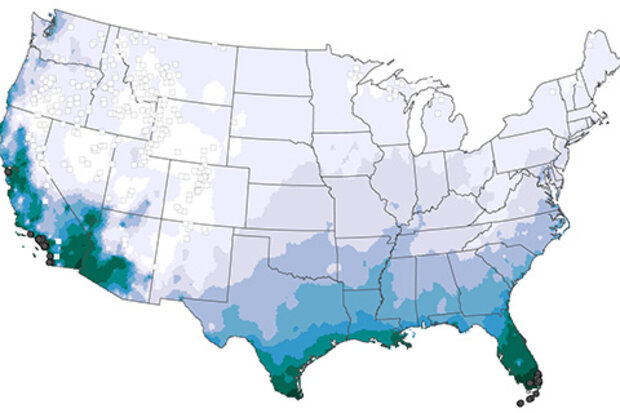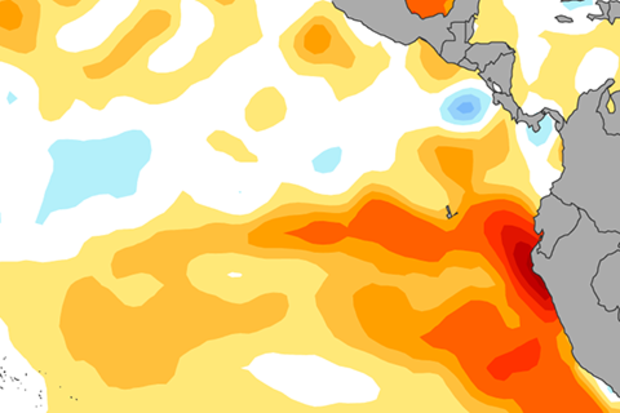Blogs
A change is afoot! After months of suggesting an elevated chance for El Niño to develop, the CPC/IRI forecast has flattened out, and neutral conditions are expected (50-55% chance) to continue through the fall.
A recipe for neutral
In fact, the Nino3.4 region (a key ENSO monitoring area in the tropical central Pacific) is hovering around 0.5°C warmer than the long-term average. Yep, that’s the threshold for El Niño, but surely you remember that ENSO is a seasonal phenomenon, meaning those warmer sea surface temperatures need to stick around for several months—long enough to provoke an atmospheric response.
Despite the warmer sea surface temperatures, the atmosphere is not behavi…
Read article
In mid-March, a cold air outbreak brought freezing temperatures to the Southeast devastating crops and causing over $1 billion in agricultural losses. For those of us who love fruit this is bad news and potentially means higher prices at the supermarket and farmers’ market. In this Beyond the Data post, we will explore some of the impacts of the freeze and why it was so devastating even though freezing temperatures in mid-March aren’t that unusual for the Southeast.
Setting the Stage
Across the eastern half of the U.S., winter was fairly warm. Most states had December-February temperatures that ranked among the five warmest in the 123-period of record. February was record and near-reco…
Read article
There are many excellent ENSO forecasters around the world who are responsible for providing assessments on the state of El Niño and La Niña for their respective governments. One of my favorite international colleagues is Dr. Ken Takahashi (Instituto Geofísico del Perú) who coordinated the ENSO team in Peru in 2015-16. We just collaborated on a retrospective examination on the 2015-16 El Niño, which will be published in July 2017 (for a pre-print click here). Now we’re faced with an entirely new situation… the potential of a new El Niño in 2017. This comes on the heels of a very strong “coastal El Niño” during February…
Read article
We’re finally starting to get through the spring barrier, when climate models have a harder time making successful forecasts. Forecasters estimate the chance of El Niño forming is about equal to the chance that neutral conditions will continue: both are just shy of 50% through the fall. Unlike two years ago, when the signal that a strong El Niño was developing was clear, most of our prediction tools are suggesting very borderline conditions, making it a tough forecast.
Current events
Ocean temperatures in the Niño3.4 region have been in neutral territory for a few months now, shifting from slightly cooler than the long-term average to about 0.4°C (0.7°F) warmer than average during Apri…
Read article
Yet another warm February has left apple growers worrying if their crops will survive below-freezing spring temperatures, a substantial concern given the annual value of the Northeast apple crop exceeds a quarter of a billion dollars. February 2017 temperature departures, as measured by Global Historical Climatology Network (GCHN) stations in the region, were eerily similar to those in 2012, when abnormally high temperatures in February and early March accelerated bud development before temperatures in the low 20s later in March and again in April severely damaged the blossoms, resulting in significant crop losses. Similar conditions last winter also resulted in abnormally high f…
Read article




